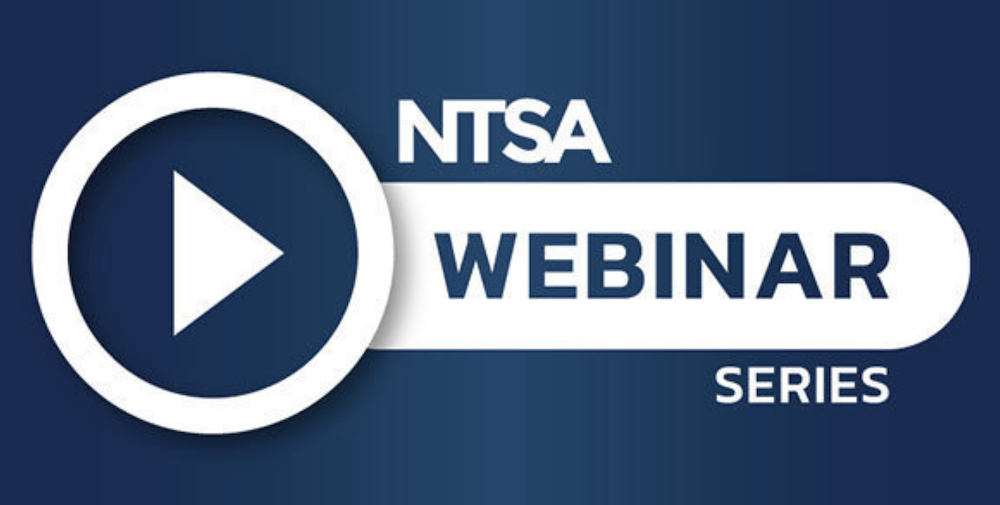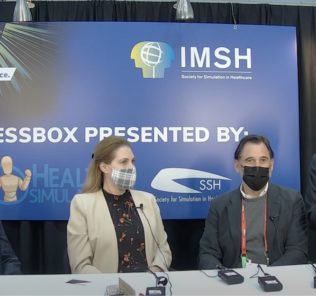NTSA Presentation Discusses Leveraging Simulation to Improve Patient Safety
The National Training and Simulation Association hosted an informative public webinar on Wednesday, April 28 titled, “A Call to Action: Leveraging Simulation to Improve Patient Safety in our Post-COVID World.” During this presentation, which was moderated by Society for Simulation in Healthcare president Bob Armstrong, several speakers discussed current issues surrounding patient safety, as the nation emerges from the trials of the COVID-19 pandemic. The discussion also identified key issues in healthcare that can be addressed with simulation and the role that leaders must play in supporting the clinical simulation use. During this virtual event, speakers included:
- Connie Lopez, Clinical Practice Consultant and Simulation Leader, Kaiser Permanente’s Northern California Risk Management and Patient Safety Team
- Haru Okuda, Executive Director, USF Health CAMLS; Assistant Vice President, USF Health Office of lnterprofessional Education and Practice; Professor, Department of Internal Medicine, USF Health Morsani College of Medicine
- Allison F. Perry, MA, Director of Faculty and Fellows, Institute for Healthcare Improvement (IHI)
Leading off the webinar, Armstrong explained that, according to the World Health Organization, patient safety is considered the absence of preventable harm to a patient during the process of healthcare, and the reduction of risk of unnecessary harm associated with healthcare to an acceptable minimum. He added that previous research and analysis has shown that between 100,000 to potentially 500,000 people die annually in the United States due to preventable medical error.
Armstrong continued by explaining that a challenge to the system in the U.S. is to ensure that patient safety efforts are applied consistently across the country and throughout these healthcare systems. For organizations to influence patient safety, Perry explained that regulation has helped make patient safety a priority and a requirement through established mechanisms and national systems for reporting and responding to events.
Sponsored Content:
“The consistency of policy and regulation is certainly key, but patient safety as a whole is much bigger than the event reporting and the regulation,” Perry said. “It’s really until leaders in the workforce understand safety and get on board with patient safety, including regulation and the policy, that patient safety regulation and policy can be helpful.”
Next, Lopez shared an example of how evidence and regulatory bodies can drive best practices. She explained that, recently, the Joint Commission implemented requirements for improving safety in perinatal settings. According to Lopez, the requirements include new standards, including 13 performance elements designed to improve quality and safety of care to women during all stages of pregnancy and postpartum.
“The drug commission reviewed the literature, and what the literature revealed was that prevention, early recognition and timely treatment of maternal hemorrhage and severe high blood pressure had the highest impact on decreasing maternal complications,” said Lopez. “As part of this new requirement, perinatal teams are now required to provide a role-specific education to all staff. That doesn’t just include the perinatal departments, but also the emergency department.”
Therefore, Lopez said that to determine system issues, the system debriefing must increase to the entire team after the clinical simulation. She explained that this is really one of the first times that a regulatory body has supported and helped drive increasing simulation.
Sponsored Content:
On the topic of working to increase healthcare simulation’s usage, Okuda noted that, over the years, many of the challenges he has encountered revolved around trying to advocate for clinical simulation, and finding ways to hardwire simulation into existing standards and benchmarks that have been created by organizations like IHI or the Joint Commission. He says the fact that the Joint Commision is now requiring healthcare simulation drills is exciting.
“When I saw that back last summer, I got very excited and we’ve already started helping organizations meet those needs. We look to groups like the IHI to set those standards,” Okuda said. “I’m curious if there’s opportunities for organizations, like IHI, to showcase simulation as another tool that could be used in a hospital or healthcare systems to improve outcomes, because there are definitely proven best practices research, evidence-based, that does work.”
Demonstrating how Kaiser Permanente has worked to “move the needle” toward increasing patient safety, Lopez shared that one of the most impactful programs that the company has implemented to improve patient safety nationwide is a perinatal patient safety program. She explained that this was initially top-down driven, but that the program is now being sustained bottom-up by front line staff.
“The program started in 2002, and it was rolled out across the country,” Lopez said. “I can share with great pride that once the program was rolled out across the nation, we had a decrease in our birth injuries by 50%. The program worked, and I want to say that simulation played the biggest part in it, because it just brought teams together so that we could have discussions around what we could do better.”
In closing, Jim Robb, president of the NTSA, shared his belief that the road to increase patient safety throughout the U.S. is a journey. Working together with strategic partners, he hopes to improve incentives and the policies that will make a difference in patient safety.
“We’re here to help all simulation centers across the United States,” Robb said. “It’s a crime to have someone come back from the battlefield and then die in a hospital due to some kind of error. That’s just unacceptable.”
More About NTSA
NTSA is a nonprofit association dedicated to facilitating dialogue between government industry and academia on topics related to providing the best possible training and training systems for soldiers and first responders. The organization provides the training, simulation, related support systems, and training services industries with a focused, formal organization to represent and promote their business interests in the marketplace.
NTSA also fosters relationships between the training industry, planners and acquisition agencies regarding requirements, procurement issues and policies. NTSA works to increase the value of training systems and services provided by industry to the government. The association hosts a portfolio of nine events each year.
Watch Recorded NTSA Webinar Here
Lance Baily, BA, EMT-B, is the Founder & CEO of HealthySimulation.com, which he started while serving as the Director of the Nevada System of Higher Education’s Clinical Simulation Center of Las Vegas back in 2010. Lance is also the Founder and acting Advisor to the Board of SimGHOSTS.org, the world’s only non-profit organization dedicated to supporting professionals operating healthcare simulation technologies. His co-edited Book: “Comprehensive Healthcare Simulation: Operations, Technology, and Innovative Practice” is cited as a key source for professional certification in the industry. Lance’s background also includes serving as a Simulation Technology Specialist for the LA Community College District, EMS fire fighting, Hollywood movie production, rescue diving, and global travel. He and his wife Abigail Baily, PhD live in Las Vegas, Nevada with their two amazing daughters.
Sponsored Content:



















